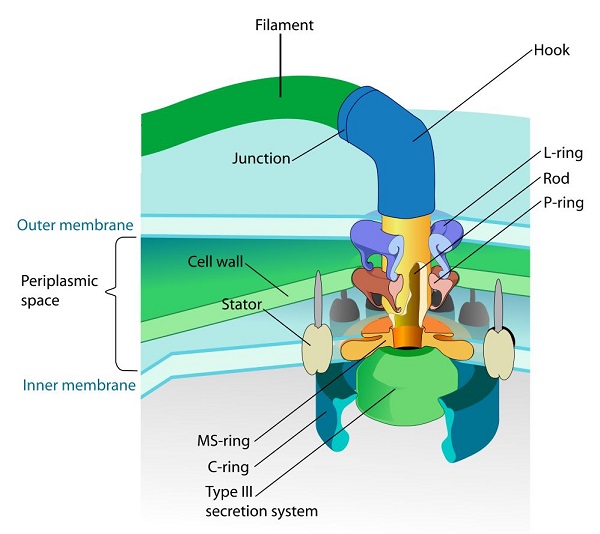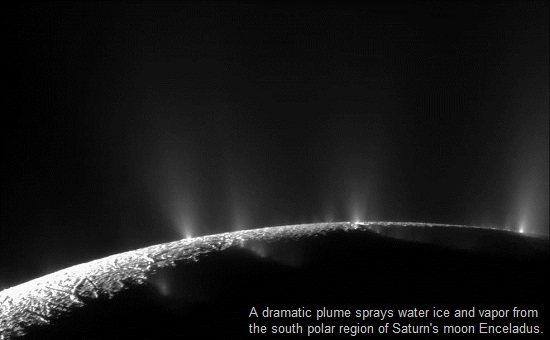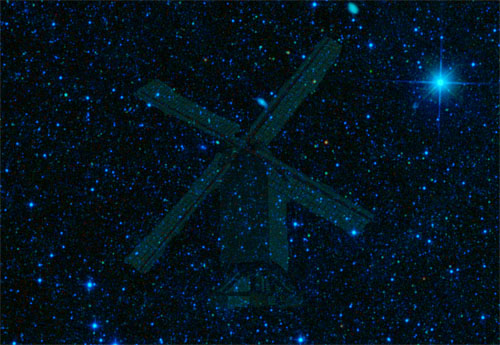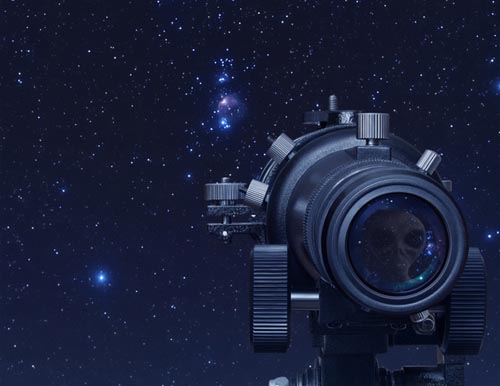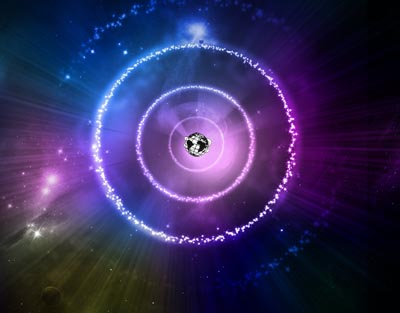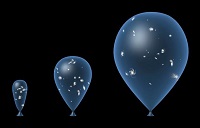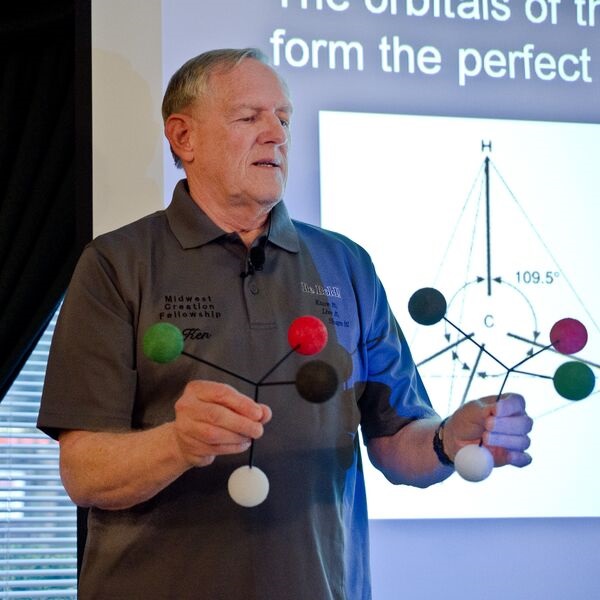
In the previous article I introduced the concept of chirality. Proteins are composed of amino acids and chirality is a property of those amino acids. To better understand how this is yet another concept that proves the impossibility of Darwinian evolution, we’re going to take a journey into the world of proteins and amino acids. Along with us on the journey, our tour guide and my featured guest: Dr. Kenneth Funk. Dr. Funk holds a Ph.D. in Organic (Peptide) Chemistry. He worked for 28 years as a synthetic organic chemist in peptide process development for Abbott Laboratories for 28 years. He is pictured above giving a talk on chirality and demonstrating how the orbitals of the four shared electrons of a carbon atom form the perfect shape of a tetrahedron. That shape is a perfect arrangement for creating chiral compounds. We’ll come back to shape. For the journey we’ll borrow Cosmos’ transport method: the ship of the imagination. Because “In this ship of the imagination, free from the shackles of space and time, we can go anywhere.”[1] Continue Reading

